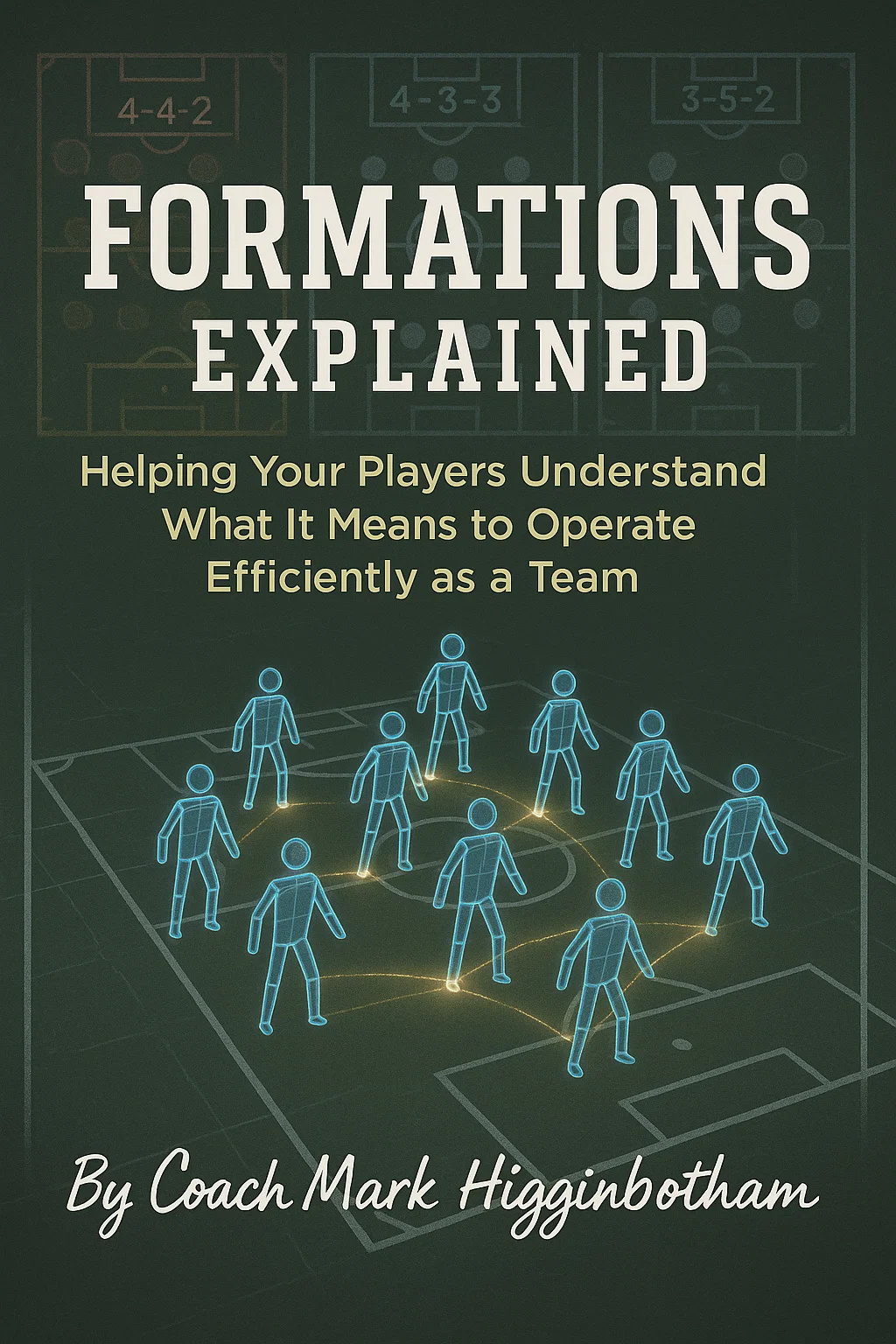
Formations Explained: Helping Your Players Understand What It Means to Operate Efficiently as a Team
Introduction: The Language of Football Tactics
Football formations are more than just numbers on a whiteboard – they’re the blueprint for team organization, player roles, and tactical identity. In Formations Explained, Coach Mark Higginbotham breaks down the complex world of tactical systems into clear, actionable principles that players at all levels can understand and execute.
Whether you’re coaching grassroots youth or competitive senior teams, this comprehensive guide will help you:
- Select the optimal formation for your squad’s strengths
- Teach positional responsibilities with clarity
- Adapt systems during matches
- Develop team cohesion through structured play
For foundational tactical knowledge, explore our Football Tactics 101 Guide.
Why Formations Matter: Beyond the Numbers Game
The Strategic Value of Team Shape
Modern formations serve three critical functions:
- Defensive Organization – Compactness and pressing triggers
- Build-up Structure – Creating passing lanes and overloads
- Attacking Patterns – Positional rotations and chance creation
Research from UEFA’s Technical Reports shows that teams who master their formation:
- Concede 32% fewer goals from open play
- Create 28% more clear scoring chances
- Maintain 22% better defensive shape during transitions
Breaking Down Modern Formations
1. The 4-3-3: Balance and Versatility
- Key Strengths:
- Midfield control through triangles
- Width from attacking wingers
- Flexible pressing options
- Player Requirements:
- Mobile fullbacks
- Technically gifted #8s
- Clinical wide forwards
Training Focus: Overload drills creating 3v2 situations in midfield
2. The 4-2-3-1: Tactical Flexibility
- Strategic Advantages:
- Dual pivot security
- Creative #10 as playmaker
- Varied attacking combinations
- Implementation Tips:
- Teach #10 to find “pockets” between lines
- Coordinate double pivot movements
For formation-specific exercises, see our Midfield Mastery Course.
3. The 3-5-2: Compactness and Width
- Modern Applications:
- Wingback-driven attacks
- Three-man defensive coverage
- Striker partnerships
- Coaching Points:
- Train center backs in build-up play
- Develop wingback endurance
Teaching Formations to Players
Step-by-Step Implementation
- Classroom Session – Video examples of the formation in action
- Shadow Play – Walkthroughs without opposition
- Conditioned Games – Small-sided scenarios enforcing formation rules
- Full Implementation – 11v11 with coaching interventions
The FA’s Coaching Resources recommend this progressive teaching method.
Adapting Formations Mid-Game
Recognizing When to Change
- Opponent Adjustments – Switching to counter their system
- Match Scenarios – Protecting leads or chasing games
- Player Strengths – Maximizing your squad’s qualities
Common Tournament Adjustments
- 4-3-3 → 4-4-2 (defensive solidity)
- 4-2-3-1 → 3-5-2 (width against compact defenses)
- 3-5-2 → 4-4-2 diamond (midfield overload)
For in-game management tips, visit our Match Day Tactics Hub.
Formation-Specific Player Development
Positional Specialization
- Fullbacks – Modern hybrid role requirements
- Central Midfielders – Understanding dual #8 vs. pivot roles
- Center Backs – Build-up responsibilities in back-three systems
Youth Development Considerations
- Start with basic shapes (7v7: 2-3-1)
- Gradually introduce complexity
- Focus on principles over rigid positions
FIFA’s Grassroots Program emphasizes this developmental approach.
Case Studies: Formations in Action
Liverpool’s 4-3-3 (2019-20 Premier League Winners)
- Fullback creativity (Alexander-Arnold/Robertson)
- Midfield balance (Henderson-Fabinho-Wijnaldum)
- Forward flexibility (Mane-Firmino-Salah)
Italy’s Euro 2020 Winning 4-3-3/3-5-2 Hybrid
- Fluid system changes
- Jorginho’s regista role
- Spinazzola’s wingback impact
Analysis available at Premier League Insights.
Why This Book Transforms Team Performance
✅ Clear Visual Aids – Diagrams and animations
✅ Progressive Coaching Methods – From basic to advanced
✅ Real-World Examples – Current elite team case studies
As Arsène Wenger observed:
“The formation is the first tactical message you give to your team – it must suit their qualities.”
Conclusion: Building Tactical Understanding
Formations Explained does more than describe systems – it teaches players to think tactically. By implementing its principles:
- Your team will play with clearer purpose
- Players will understand their roles in context
- In-game adjustments will become instinctive
Ready to elevate your team’s tactical IQ?
📖 Get your copy today and start building smarter, more organized teams.
For ongoing formation education, enroll in our Advanced Tactics Series.
Additional Resources
Subscribe for Exclusive Formation Content.
